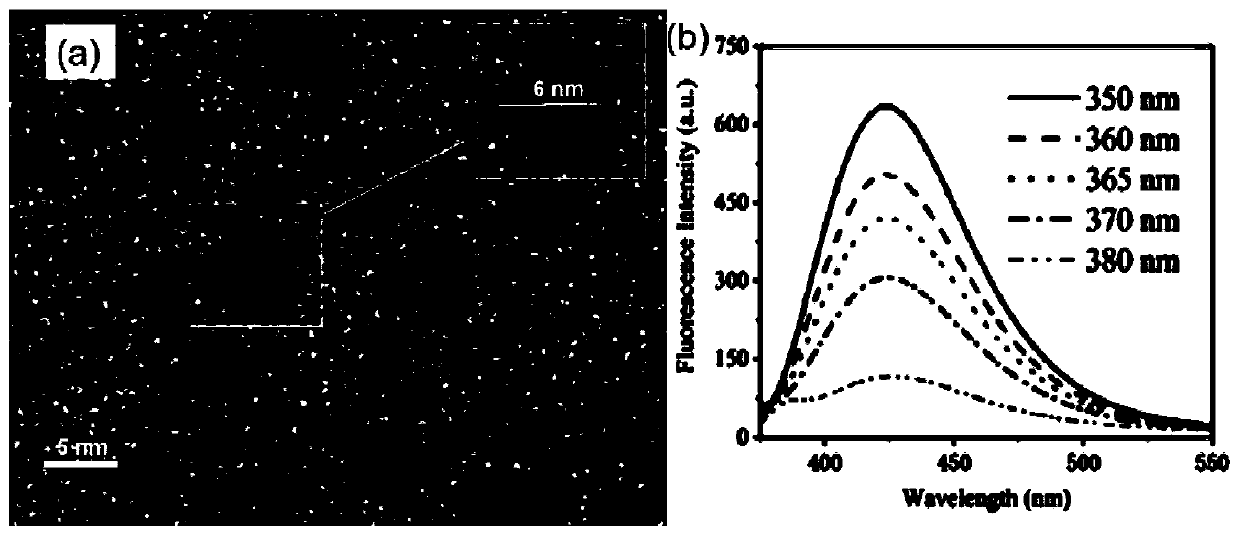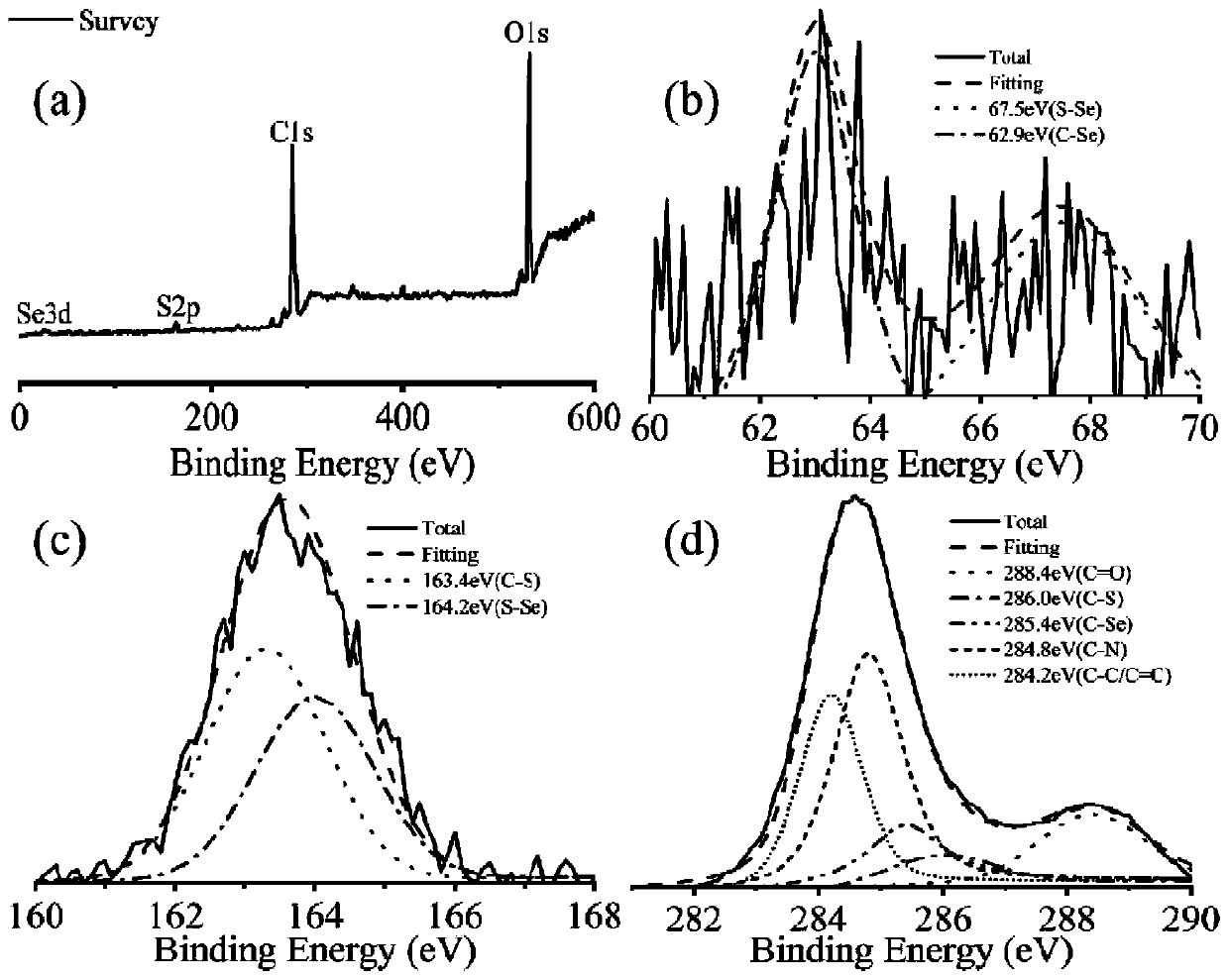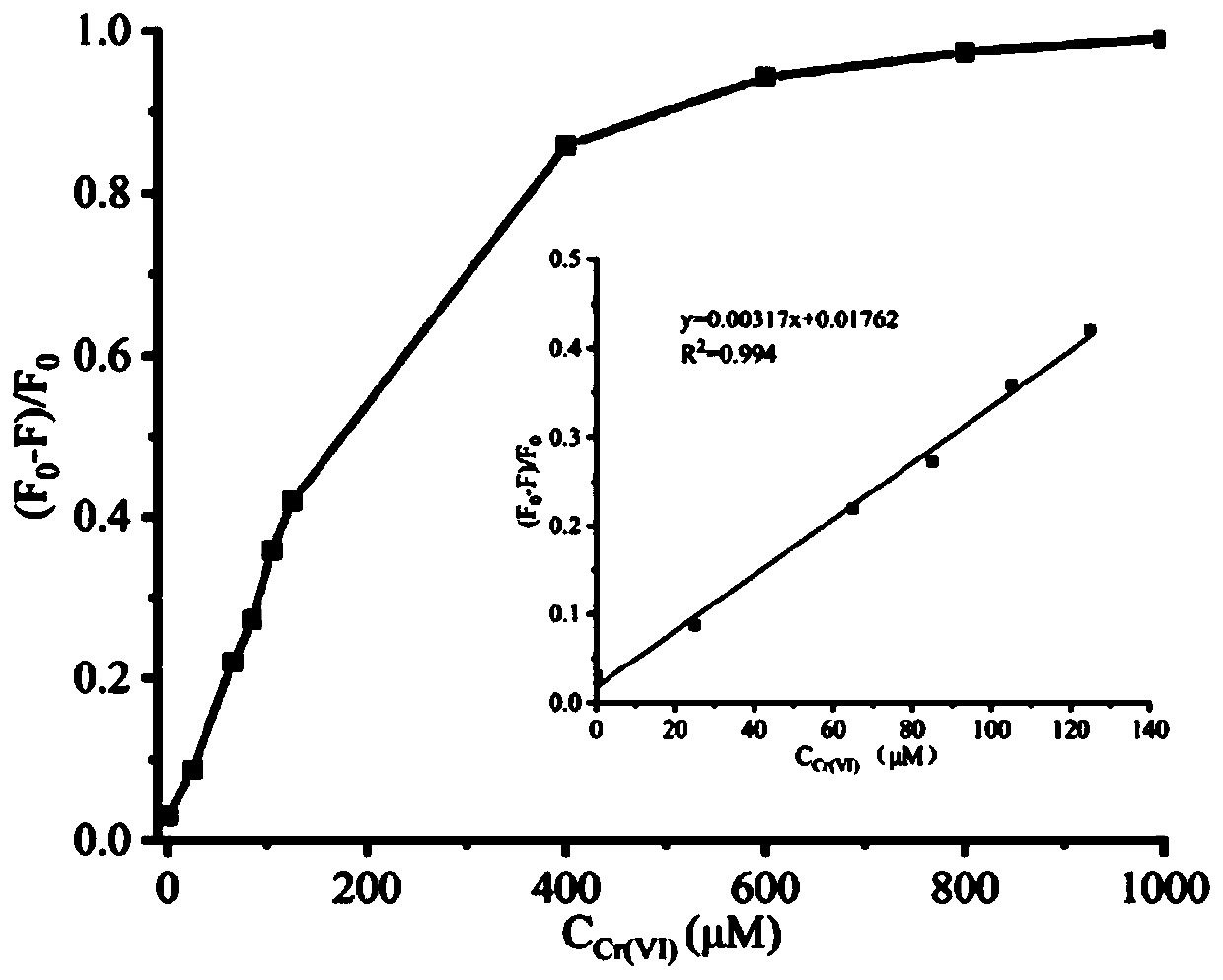S,Se-CQDs and method for efficiently detecting Cr(VI) pollutants by using S,Se-CQDs
A pollutant and high-efficiency technology, applied in chemical instruments and methods, measuring devices, fluorescence/phosphorescence, etc., can solve problems such as affecting human health, polluting the environment, poor selectivity, etc., achieving obvious differences in selectivity, strong anti-interference ability, low cost effect
- Summary
- Abstract
- Description
- Claims
- Application Information
AI Technical Summary
Problems solved by technology
Method used
Image
Examples
Embodiment 1
[0036] Dissolve citric acid (5.0g), mercaptoethylamine (0.8g) and sodium selenite (0.06g) in 40mL of pure water in sequence. After fully dissolved, add an appropriate amount of pure water to a total volume of 50mL, and then transfer the solution Put it into a 50mL polytetrafluoroethylene lining, put the lining into a stainless steel reactor and place it in an oven at 150°C for 150 minutes of hydrothermal reaction, then take out the solution after the temperature of the oven drops to room temperature, and then put it under the condition of 8000r / min Centrifuge for 20 minutes, separate the supernatant, and then dialyze with a 200Da dialysis bag for 2 days, change the water every 8 hours, and finally freeze-dry to obtain the target product: sulfur-selenium doped carbon quantum dots (S,Se-CQDs).
Embodiment 2
[0038] Dissolve citric acid (6.0g), mercaptoethylamine (0.8g) and sodium selenite (0.06g) in 40mL of pure water in turn. After fully dissolved, add an appropriate amount of pure water to a total volume of 50mL, and then transfer the solution Put it into a 50mL polytetrafluoroethylene lining, put the lining into a stainless steel reactor and place it in an oven at 150°C for 150 minutes of hydrothermal reaction, then take out the solution after the temperature of the oven drops to room temperature, and then put it under the condition of 8000r / min Centrifuge for 20 minutes, separate the supernatant, and then dialyze with a 200Da dialysis bag for 2 days, change the water every 8 hours, and finally freeze-dry to obtain the target product: sulfur-selenium doped carbon quantum dots (S,Se-CQDs).
Embodiment 3
[0040]Dissolve citric acid (8.0g), mercaptoethylamine (0.8g) and sodium selenite (0.06g) in 40mL of pure water in sequence, add appropriate amount of pure water to a total volume of 50mL after the dissolution is sufficient, and then transfer the solution Put it into a 50mL polytetrafluoroethylene lining, put the lining into a stainless steel reactor and place it in an oven at 150°C for 150 minutes of hydrothermal reaction, then take out the solution after the temperature of the oven drops to room temperature, and then put it under the condition of 8000r / min Centrifuge for 20 minutes, separate the supernatant, and then dialyze with a 200Da dialysis bag for 2 days, change the water every 8 hours, and finally freeze-dry to obtain the target product: sulfur-selenium doped carbon quantum dots (S,Se-CQDs).
PUM
 Login to View More
Login to View More Abstract
Description
Claims
Application Information
 Login to View More
Login to View More - R&D
- Intellectual Property
- Life Sciences
- Materials
- Tech Scout
- Unparalleled Data Quality
- Higher Quality Content
- 60% Fewer Hallucinations
Browse by: Latest US Patents, China's latest patents, Technical Efficacy Thesaurus, Application Domain, Technology Topic, Popular Technical Reports.
© 2025 PatSnap. All rights reserved.Legal|Privacy policy|Modern Slavery Act Transparency Statement|Sitemap|About US| Contact US: help@patsnap.com



